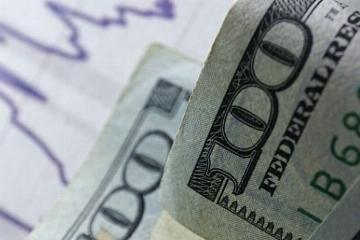In recent months, the Federal Reserve has been making significant moves in the realm of interest rates, which has drawn the attention of economists, analysts, and investors around the worldAs the economic landscape in the United States has grown increasingly complex, the Fed's decisions to lower interest rates have raised important questions about the sustainability of U.S. fiscal policy and the broader implications for the global economy.
On December 18, 2023, the Federal Reserve announced a reduction in the target range for the federal funds rate by 25 basis points, marking the third such decrease in 2023 aloneAccording to Federal Reserve Chairman Jerome Powell, this decision aimed to stabilize the markets in the short term and relieve some pressure on interest paymentsHowever, despite these assurances, underlying issues within the American economy remain significant and troubling.
As projections indicate that the total U.S. national debt could surpass a staggering $35 trillion by the end of 2024, the annual interest payments are anticipated to balloon to approximately $1.1 trillion, representing a striking 6.4% of the nation's GDP
This creates a precarious situation, particularly amidst political tensions and the ongoing partisan struggles in CongressMany Republican lawmakers have opposed any funding bills that do not include a hike in the debt ceiling, creating a standoff that risks a government shutdown and further threatens market confidence.
Traditionally, lowering interest rates is seen as a tool to stimulate economic growth; however, for a nation already grappling with massive debt, such a strategy feels more like a remedy fraught with risksIncreased access to borrowing typically diminishes the attractiveness of the dollar in global markets, leading to capital outflows that exacerbate issues of domestic investment inadequacyThe concern among economists is that reliance on rate cuts to manage debt could incite a series of reactions resulting in a depreciation of the dollar, ultimately leading to a scenario characterized as 'stagflation' — a combination of stagnation and inflation.
This broader concern was underscored by recent actions taken by China, which has started to reduce its holdings of U.S
- Dollar/Yen Hits Five-Month High
- Slight Decline in the Dollar Index
- AI Revolutionizes Home Decoration
- Dollar Retreats, Oil Prices Rebound
- The Secret Behind Visual China's Stock Surge
Treasury bonds significantlyIn October 2023, China offloaded $11.9 billion in U.S. debt, marking the lowest level of holdings since 2009. This divestment serves as a clear indication of China's stance on U.S. fiscal practices and also reflects a growing caution regarding the reliability of U.S. financial instruments.
The reduction in U.S. bond holdings is primarily attributed to the Fed's rate cuts, which have caused a corresponding decline in bond yieldsFor instance, the yield on the ten-year Treasury bond dropped from 4.35% at the beginning of the year to approximately 3.85% by year-end, significantly diminishing the appeal for international investorsFurthermore, with the total debt continuing to skyrocket, many agencies have raised alarms about the risk of a credit rating downgrade for the U.S.
Amid these developments, China has been diversifying its foreign exchange reserves by increasing its gold purchases, with predictions suggesting that by the end of 2024, China’s gold reserves could reach as much as 2,168 tons — a new record
This strategy is emblematic of China's intent to diminish vulnerability to fluctuations in the dollar and enhance its influence within the global financial system.
Moreover, the ongoing geopolitical tensions, particularly related to trade and technology, have led to escalated economic measures from both sidesThe U.S. has imposed restrictions on Chinese semiconductor companies, while China has used its reduced holdings of U.S. debt as a countermeasureThis tit-for-tat dynamic underscores the importance of economic leverage in international relations.
As the United States contemplates the ramifications of these developments, it is essential to recognize the potential domino effect that China's decision to reduce its Treasury holdings may have on other creditor nationsFor instance, recent reports indicate that Japan, another major holder of U.S. debt, also began reducing its holdings, selling off $20.6 billion in October
If these trends persist, the U.S. could face heightened risks of a funding shortfall, severely impacting its ability to finance operations and commitments.
The shifting landscape underscores a growing global movement towards reducing dependence on the dollar for international transactionsCountries like Saudi Arabia and Russia have been increasingly expanding the proportion of trade conducted outside of the dollar frameworkA notable example of this trend was observed in mid-2024 when over 60% of trade between China and Russia was settled in renminbi for the first time.
China’s decision to reduce U.S. debt holdings reflects a broader drive towards 'de-dollarization' — the process by which countries seek to move away from reliance on the U.S. dollarThis trend threatens to undermine the dollar's status as the world’s reserve currency and could have far-reaching implications on global trade and finance.
As two of the world’s largest economies, the competition between China and the U.S. over financial influence is profound and multi-layered

With China positioning itself as a leader in critical sectors such as rare earth minerals and high-end manufacturing, the U.S. finds itself in an increasingly vulnerable position in this economic chess game.
In conclusion, while the Fed's policy of lowering interest rates might provide a temporary reprieve for the U.S. economy, China's strategic divestment from U.STreasuries sends a powerful signal that cannot be ignoredAs this financial standoff continues, it is imperative that observers watch closely for the implications that will unfold, not just for the two nations involved but for the global economic environment as a wholeThe days ahead will be pivotal in determining not only the fate of U.S. fiscal policy but also the future trajectory of international economic relations.
These reflections represent my personal perspective on an intricate and evolving situation; differing opinions are certainly welcome as the discourse continues